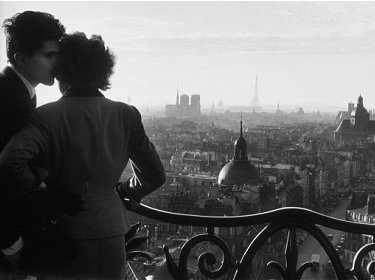Tags
black and white photographs, famous, French photographer, humanist, Paris, Photo, Photography, Provence, Rapho agency, Ray Harris, realism, Willy Ronis, Work
This may not be one of the most famous of Willy Ronis’ photos but it does say something about his passion for photographing daily life with humanity as well as expertise in ‘painting with light’.
If you are in Paris just now you may just be able to catch the exhibition of Ronis’ photos at the French Mint
Willy Ronis
Une poétique de l’engagement
du 16 avril au 22 août 2010 à la Monnaie de Paris
One of his more famous photos of his wife
For this exhibition , many of the photos were chosen by Ronis himself, before he died last year.If Paris dominates the exhibition, there are also pictures from abroad, especially in East Germany, each time documenting some aspect of social transformation. The main themes represented in the exhibition are :
– The street
– Work,
– Travel,
– The body,
– And the biography of Willy Ronis.
So lets take a tour of his life and work:
to sum up…
Willy Ronis was the last of a generation of French photographers who were central to the medium’s development during the 20th century. Like his contemporaries Henri Cartier-Bresson, Robert Doisneau and Brassaï, Ronis showed in the tender expressiveness he brought to his images that photography could be an art form, rather than the mere mechanical reproduction of life that it was considered in its infancy.
and humble beginnings…
After finishing his military service in 1932, Ronis was compelled by his father’s ill health to take on the family business (photography of course!) . Although he had been given a camera at 15 — his first picture was of the Eiffel Tower — he had developed no great interest in photography, and disliked having to take the passport pictures and baby portraits that were the shop’s stock in trade. In 1936, when his father died, he sold up.
Aided by his sympathies with and connections on the Left, Ronis began to place work in Communist Party magazines and newspapers. Together with Doisneau and Brassaï, he joined the Rapho agency, and took a notable series of pictures of striking workers at the Citroën plant in 1938.
In 1953 he was also one of the “Five French Photographers” selected by the curator Edward Steichen for a show at the New York Museum of Modern Art, the others being Cartier-Bresson, Doisneau, Brassaï and Izis. Two years later Ronis took a memorable series of shots of London, including the “French pub” in Soho. In 1957 he was awarded the Gold Medal at the Venice Biennale. With Doisneau and Rene-Jacques, he was a key member of the Group of XV, dedicated to making photography accepted as art.
Even though he was a LIFE photographer , after asking if he could write his own captions for his photographs, he never heard from them again. It seemed he was unhappy at having his photographs cropped and offered as a very different image than what he originally took.
Like those contemporaries, too, Ronis became the chronicler and creator of a romantic vision of Paris now firmly lodged in the public imagination. His is eternally a city of street urchins and knife grinders, of jolly moustachioed diners and — in perhaps his best-known picture — of young lovers gazing across misty rooftops.
Although, in common with many of the photographers of his generation, Ronis worked as a photojournalist, and had his oeuvre shaped by the increasing portability of cameras, his main concern was not news but daily life. His most successful book, Belleville-Ménilmontant (1954), catalogued the seemingly timeless routines of the quartier that had given birth to Piaf: its steep streets and crowded tenements; a glazier back-lit by sunlight, a pane of glass on his shoulders.
Look at the way he captures light, a real master
Much of his social reportage was informed by left‐wing sympathies, reinforced after the Second World War by his marriage to the painter Marie‐Anne Lansiaux (1910–91), a French Communist Party militant.
Willy Ronis, photographer, was born on August 14, 1910. He died on September 12, 2009, aged 99
As I was leaving the exhibition, this scene caught my eye..
Willy was a great raconteur and it was known that he had a story to tell about every one of his photos:
and what about his mountain photos:
the above can be found on Hackel Bury Fine Art

















BRAVO!Bellissimo ricordo e splendide immagini.fernirosso
Pingback: Nell’anniversario della nascita.L’arte di Willy Ronis | CARTESENSIBILI
Pingback: Willy Ronis | Fototeca
Pingback: Fotorecalcitrante » Archives » Willy Ronis
Pingback: Bill Brandt – shadow, light and modernism. | Photography and Music
Pingback: Een antisemitisch kippenbrein – tibaert